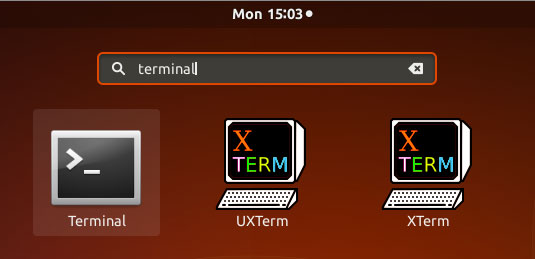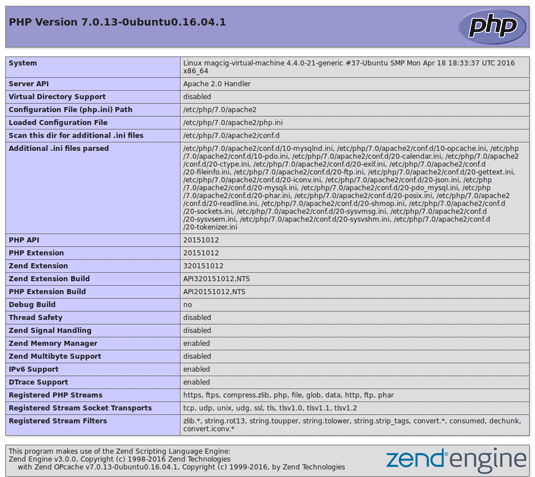Install LAMP PHP 7.0 Ubuntu
How to Install LAMP PHP 7.0 on Ubuntu-Based GNU/Linux Systems – Step by step Tutorial.
And this Ubuntu LAMP PHP 7.0 Installation is to support some particular Setup like the Magento Web Platform where is between the Requirements.
First, the default LAMP Stack for Ubuntu is composed of: Apache, MySQL and PHP 7.
So thanks to the new Zend Engine 3.0, your PHP 7 apps see up to 2x Faster performance and 50% better Memory consumption than PHP 5.x.
And LAMP is de facto Web Development Standard. Today, the products that make up the LAMP stack are included by default in nearly all GNU/Linux distributions.

-
First, Open a Shell Session
Or Login into Server Shell
Ctrl+Alt+t on Ubuntu desktop.(Press “Enter” to Execute Commands)

In case first see: Terminal Quick Start Guide.
-
How to Install PHP 7.0 on Ubuntu GNU/Linux
-
Then to Install Complete LAMP Stack.
sudo apt install apache2 mysql-server php-mysql
If Got “User is Not in Sudoers file” then see: How to Enable sudo
-
And for Installing the PHP 7 Apache Module.
sudo apt install libapache2-mod-php7.0
Please note that this package ONLY works with Apache’s prefork MPM, as it is not compiled thread-safe.
-
Finally, to Test LAMP WebServer Installation
Access the Server document’s location:cd /var/www/html
Create a PHP Info file:
sudo nano info.php
If Got “User is Not in Sudoers file” then see: How to Enable sudo
And Append:<?php phpinfo(); ?>
Ctrl+x to Save & Exit from nano Editor ;)
Set the www-data as User and Group:sudo chown www-data:www-data info.php
Then Open on Browser the URL:
http://localhost/info.php
In case Replace “localhost” with your Server IP in the above URL.

You should Successfully see the PHP Info notice similar to here above :) -
How to Create an Apache 2 Virtual Host on Ubuntu.
How to Enable Apache2 mod_rewrite Module on Ubuntu.